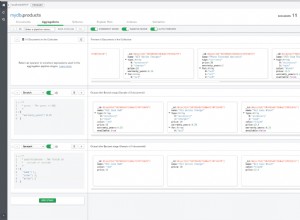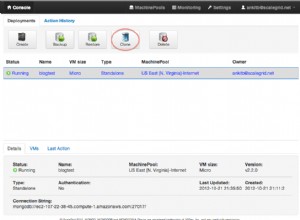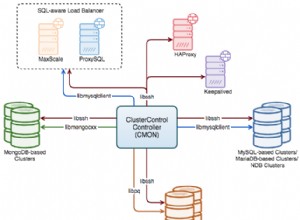Rozwiązałem ten problem. Po pierwsze, robię klasy, które są serializowane. Aby to zrobić, postępuj zgodnie z tym postem:Jak sprawić, aby klasa java była serializowalna, która jest generowana przez wsdl
Następnie utworzyłem redis-config.xml pod webapp/WEB-INF:
<?xml version='1.0' encoding='UTF-8' ?>
<beans xmlns="http://www.springframework.org/schema/beans"
xmlns:xsi="http://www.w3.org/2001/XMLSchema-instance"
xmlns:p="http://www.springframework.org/schema/p"
xmlns:context="http://www.springframework.org/schema/context"
xsi:schemaLocation="http://www.springframework.org/schema/beans
http://www.springframework.org/schema/beans/spring-beans-3.1.xsd
http://www.springframework.org/schema/context
http://www.springframework.org/schema/context/spring-context-3.1.xsd">
<context:annotation-config/>
<bean
class="org.springframework.session.data.redis.config.annotation.web.http.RedisHttpSessionConfiguration"/>
<bean id="jedisConnectionFactory"
class="org.springframework.data.redis.connection.jedis.JedisConnectionFactory" p:host-name="127.0.0.1"
p:port="6379" p:usePool="true" p:database="0"/>
</beans>
Następnie wprowadziłem kilka zmian w web.xml. Do przechowywania sesji musi istnieć springSessionRepositoryFilter z klasą org.springframework.web.filter.DelegatingFilterProxy. Ale miałem tę klasę w web.xml z inną nazwą filtra. Aby program działał, należy najpierw napisać springSessionRepositoryFilter:
<filter>
<filter-name>springSessionRepositoryFilter</filter-name>
<filter-class>org.springframework.web.filter.DelegatingFilterProxy</filter-class>
</filter>
<filter>
<filter-name>springSecurityFilterChain</filter-name>
<filter-class>org.springframework.web.filter.DelegatingFilterProxy</filter-class>
</filter>
<filter-mapping>
<filter-name>springSessionRepositoryFilter</filter-name>
<url-pattern>/*</url-pattern>
</filter-mapping>
<filter-mapping>
<filter-name>springSecurityFilterChain</filter-name>
<url-pattern>/*</url-pattern>
<dispatcher>FORWARD</dispatcher>
<dispatcher>REQUEST</dispatcher>
</filter-mapping>
Następnie dodałem wartość /WEB-INF/redis-config.xml do context-param, ale spowodowało to problem dla log4j2. Dlatego u góry napisałem parametr kontekstu dla log4j2.
<context-param>
<param-name>log4jConfigLocation</param-name>
<param-value>classpath:log4j.properties</param-value>
</context-param>
<context-param>
<param-name>contextConfigLocation</param-name>
<param-value>
/WEB-INF/spring-security.xml
/WEB-INF/applicationContext.xml
/WEB-INF/redis-config.xml
</param-value>
</context-param>
To wszystko. Teraz sesje są przechowywane w Redis
EDYTUJ :Powyższy kod działał tylko z lokalnym Redisem. Kiedy pisałem zdalny serwer Redis, zgłasza wyjątek w następujący sposób:Nie można skonfigurować Redisa do powiadomień o przestrzeni kluczy. Aby rozwiązać ten problem, zmieniłem mój plik redis-config.xml w następujący sposób:
<?xml version='1.0' encoding='UTF-8' ?>
<beans xmlns="http://www.springframework.org/schema/beans"
xmlns:xsi="http://www.w3.org/2001/XMLSchema-instance"
xmlns:p="http://www.springframework.org/schema/p"
xmlns:context="http://www.springframework.org/schema/context"
xmlns:util="http://www.springframework.org/schema/util"
xsi:schemaLocation="http://www.springframework.org/schema/beans
http://www.springframework.org/schema/beans/spring-beans-3.1.xsd
http://www.springframework.org/schema/context
http://www.springframework.org/schema/context/spring-context-3.1.xsd http://www.springframework.org/schema/util http://www.springframework.org/schema/util/spring-util.xsd">
<context:annotation-config/>
<bean
class="org.springframework.session.data.redis.config.annotation.web.http.RedisHttpSessionConfiguration" p:configureRedisAction-ref="configureRedisAction" />
<util:constant id="configureRedisAction"
static-field="org.springframework.session.data.redis.config.ConfigureRedisAction.NO_OP"/>
<bean id="jedisConnectionFactory"
class="org.springframework.data.redis.connection.jedis.JedisConnectionFactory" p:host-name="xxx.xxx.xx.xxx"
p:port="6379" p:usePool="true" p:database="0" p:password="xxx"/>
</beans>
Zapomniałem wspomnieć, że niektóre nowe wersje zależności nie współpracują ze sobą. Zależności dla redis powinny wyglądać następująco:
<dependency>
<groupId>org.springframework.data</groupId>
<artifactId>spring-data-redis</artifactId>
<version>1.8.8.RELEASE</version>
</dependency>
<dependency>
<groupId>redis.clients</groupId>
<artifactId>jedis</artifactId>
<version>2.9.0</version>
</dependency>
<dependency>
<groupId>org.springframework.session</groupId>
<artifactId>spring-session</artifactId>
<version>1.3.3.RELEASE</version>
</dependency>
<dependency>
<groupId>org.springframework.session</groupId>
<artifactId>spring-session-data-redis</artifactId>
<version>1.2.2.RELEASE</version>
</dependency>
<dependency>
<groupId>io.lettuce</groupId>
<artifactId>lettuce-core</artifactId>
<version>5.1.1.RELEASE</version>
</dependency>




